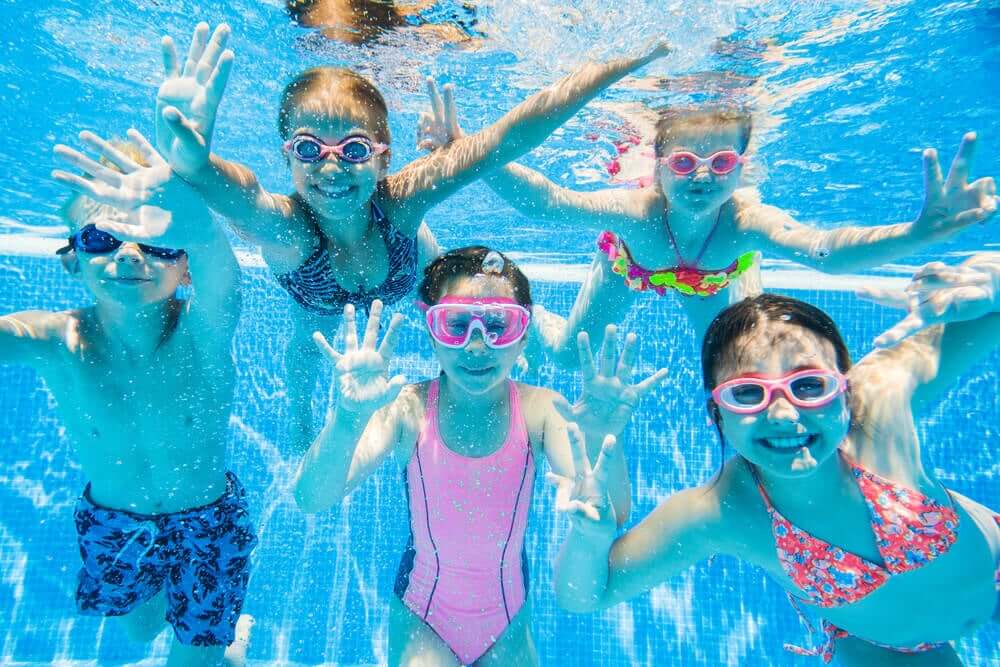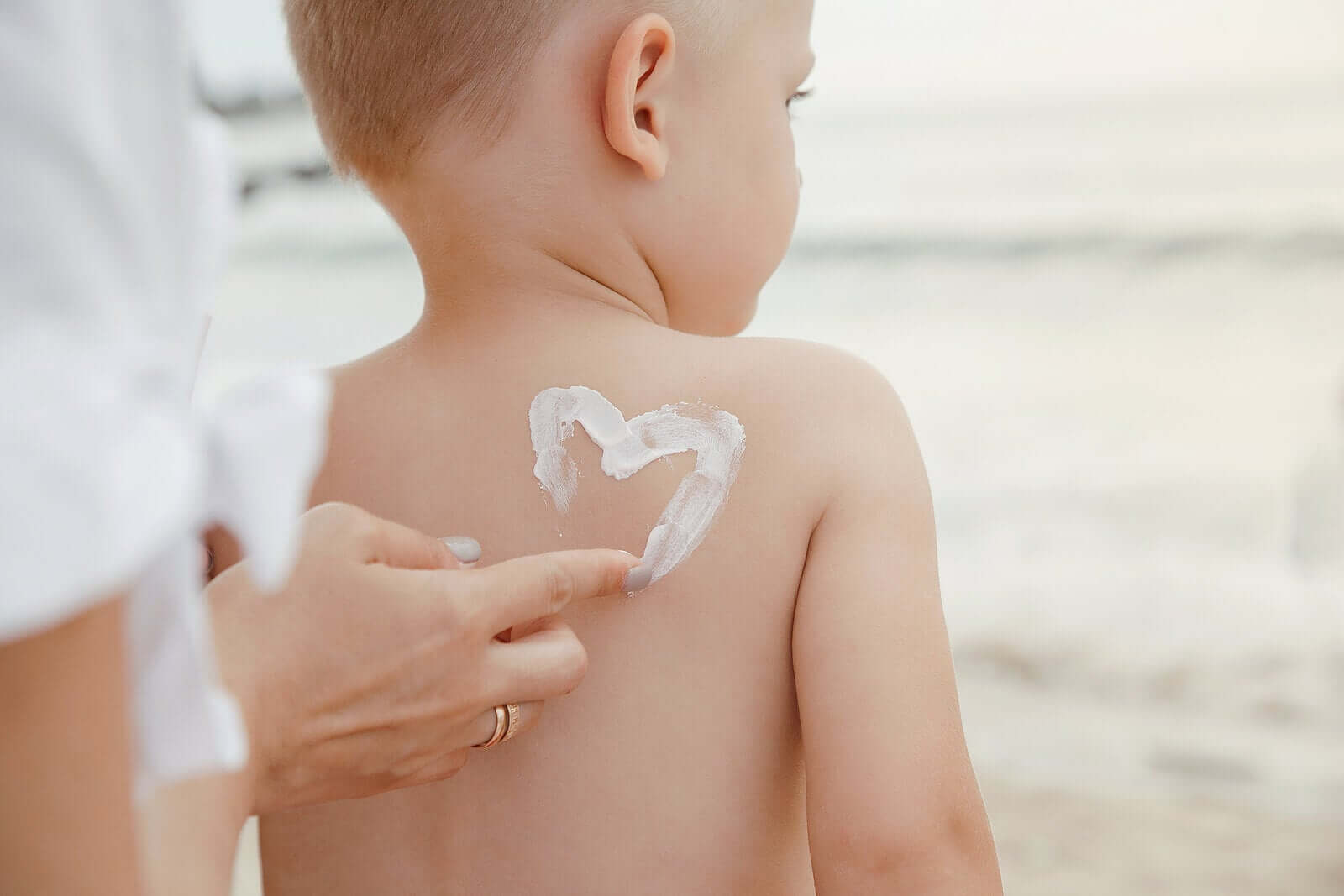What is Pool Pulpitis?

Pool pulpitis is a fairly common condition, although it’s rarely a reason for consulting a specialist. It’s also known as pool palms or juvenile palmar dermatitis and it’s completely benign, as it doesn’t alter the health of the child in a considerable way, nor is it serious.
However, pulpitis is usually underdiagnosed, and therefore, today, we’re going to tell you everything you need to know to recognize and treat it.
The causes of pool pulpitis
Juvenile palmar dermatitis in swimming pools affects children with a greater prevalence and is mainly related to the prolonged activities that they carry out in the aquatic environment.
It also occurs more frequently in children due to the great fragility and delicacy of their skin.
In addition, infants tend to spend long hours in swimming pools and hyperhydration of the horny layer of the skin due to prolonged bathing is one of the reasons for its appearance. Also, the prolonged friction of wet skin and the irritation of the chemicals contained in the swimming pool water are often relevant.

Children’s skin characteristics
The skin of children is characterized by being smoother and softer than that of adults. The stratum corneum (the outermost layer) is usually thinner and both the natural moisturizing factor and the layer of fat are much scarcer than in older individuals.
In turn, children’s skin is characterized by its immaturity and fragility, which makes it more sensitive to inflammation and irritation. For this reason, it must be properly cared for and hydrated in order to avoid injury.
It’s important to take the necessary precautions when exposing yourself to the sun, during daily hygiene and when choosing cleaning or cosmetic products.
Atopic dermatitis
Children with atopic dermatitis are at higher risk of developing juvenile palmar dermatitis, so their care should be reinforced.
Atopic disease, which is a specific variant of eczema, is the most common chronic inflammatory skin disease. Its origin involves environmental and genetic factors that cause abnormalities in the immune system and in the most superficial layer of the skin.
This pathology is associated with intense itching and begins in childhood. In addition, it involves eczematous lesions, dry skin, and lichenification. It’s part of the atopic triad along with asthma and allergic rhinoconjunctivitis. And characteristically, it can start simultaneously or successively, in the so-called “atopic march” or “allergic march”
Also read: 10 Types of Dermatitis in Children
The clinical manifestations of swimming pool pulpitis
The clinical manifestations are very characteristic lesions of the condition. Erythematous-violaceous, shiny macules are observed in the region of the pads of the fingers of the hands. They can even be on the soles of the feet or on the palms of the hands. In some exceptional cases, the child may have blisters.
In general, all the lesions that appear are usually asymptomatic, except for some that may cause mild discomfort, such as pain or itching. This means that parents don’t usually find out and swimming pool pulpitis goes unnoticed. Therefore, it’s underdiagnosed, although very frequent.
Therapeutic options for pool pulpitis

The characteristic appearance of the skin lesions together with the history of having been in the pool make the diagnosis easy, and no additional examination or exploration is necessary.
With regard to treatment, in general the behavior is expectant, as the lesions resolve spontaneously when the activities in the water cease.
However, proper hydration with a moisturizing cream and in some cases, the application of a cream with mild corticosteroids is recommended.
In those cases where the scaly or irritative lesions appear in other parts of the body, or the child has bothersome symptoms, it’s best to consult a pediatrician in order to rule out other pathologies.
You may be interested: 5 Common Childhood Infections During Summer
Pool pulpitis and its evolution
In conclusion, swimming pool pulpitis is a friction dermatosis, characteristic of childhood, which is very little diagnosed. Don’t be alarmed by this condition, as it’s mild, benign, and resolves spontaneously.
All cited sources were thoroughly reviewed by our team to ensure their quality, reliability, currency, and validity. The bibliography of this article was considered reliable and of academic or scientific accuracy.
- Morgado-Carrasco D, Feola H, Vargas-Mora P. Pool Palms. Concepto de práctica de Dermatol . 2019; 10 (1): e2020009. Publicado el 31 de diciembre de 2019. doi: 10.5826 / dpc.1001a09. Disponible en: https://www.ncbi.nlm.nih.gov/pmc/articles/PMC6936631/
- Novoa A, Klear S. Pool palms. Arch Dis Child. 2016 Jan;101(1):41. doi: 10.1136/archdischild-2015-309633. Epub 2015 Sep 30. PMID: 26424817. Disponible en: https://pubmed.ncbi.nlm.nih.gov/26424817/
- Lee S, Mancuso J, Tracy A, Eichenfield L. Not COVID Toes: Pool Palms and Feet in Pediatric Patients. Cutis. VOL. 108 NO. 5 I NOVEMBER 2021. doi:10.12788/cutis.0385. Disponible en: https://cdn.mdedge.com/files/s3fs-public/CT108005276.PDF
